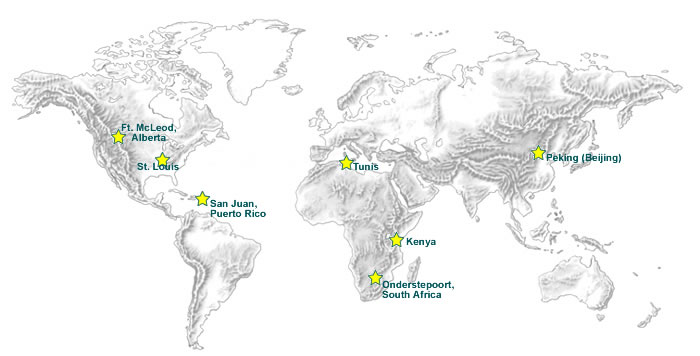Edmund Vincent Cowdry (1888-1975)
E. V. Cowdry was born in 1888 in Ft. MacLeod, Alberta, Canada, in 1888, the son of banker Nathaniel Harrington and Anna Ingram Cowdry. He spent most of his early childhood in central Ontario and received his secondary education at a public school in England. Cowdry studied at the University of Toronto, where he received his A.B. in 1909. That same year he entered the United States for the first time to commence graduate study at the University of Chicago. He completed his Ph.D. there in 1913. His first full-time professional position was at Johns Hopkins University as associate in anatomy. Cowdry married the former Alice Hanford Smith of Washington, DC in 1916. In 1917 he was recruited by the China Medical Board of the Rockefeller Foundation to establish and lead the Anatomy Department of Peking Union Medical College in Beijing.
The Cowdrys traveled to Beijing in 1917. During the following four years he concentrated on the construction of a building to house the laboratories and teaching facilities of his department and in recruitment of faculty. The college was designed as a dramatic implant of American scientific ideas and methods in China. But Cowdry was charged also with studying and reaching accommodation with traditional Chinese medicine and its practitioners. He also visited British and Japanese schools while in East Asia. Summers permitted leaves of absence from Beijing to return to the United States. Alice Cowdry remained home in 1920 when she became pregnant with their first child. Cowdry secured a transfer to the Rockefeller Institute in New York in 1921.
During his years in New York, Cowdry diverted his attentions from human anatomical research to concentrate on parasitic diseases affecting both animals and human populations. Much of his investigations in warm months of the year were spent at the Marine Biological Laboratories at Woods Hole, Massachusetts. The Rockefeller Foundation sent him twice on expeditions to Africa. The first was in 1924-1925 to Onderstepoort, near Pretoria, South Africa, where he discovered the cause of heartwater disease in cattle, sheep, and goats – a microorganism thereafter named for him, Cowdria ruminantium. The second was a visit in 1927-1928 to Tunis in French-controlled North Africa and a branch of the Institut Pasteur, where Cowdry was called upon to determine causation between canine malaria and the strain affecting humans – he reported that none existed. In 1930 the British Colonial Office sponsored a visit to Kenya to study East Coast fever, another cattle disease.
In 1930 Cowdry became a U.S. citizen and had become a professor at Washington University as of 1928 – but his last African journey and other commitments kept him from full-time attention to his new academic position in St. Louis. In the 1930s, however, and for the rest of his life, St. Louis became his principal home. His appointment was first as head of cytology in the Department of Anatomy. In the course of the decade he revitalized the cell biology program and facilitated the use of electron microscopes in medical school research. He briefly concentrated on leprosy in his own research and tested the drug promin in its treatment. He visited the Leonard Wood Memorial of the School of Tropical Medicine in San Juan, Puerto Rico in that regard.
In 1939 he became research director of the Barnard Free Skin and Cancer Hospital in St. Louis, then an independent institution. That appointment channeled his laboratory efforts toward detecting and treating skin cancers and he published extensively on his findings. Serving until 1948, he initiated efforts toward integrating Barnard Hospital with Washington University – although the merger was not fully realized until 1954. In 1940 he became full department head at the university’s anatomy department, serving until 1950. He hosted the 4th International Cancer Congress in St. Louis in 1947 and traveled frequently through the United States and abroad as a consultant and organizer of efforts to fight cancer. He was a key player in securing the first National Institutes of Health grants for work at the university and for the planning of the Cancer Research Building on campus (1950).
There is a measure of irony in the way that Cowdry is often commemorated for a side of his complicated professional career that grew out of – but was ultimately distinct from – laboratory bench science. He is considered a founder of the collective field of scientific gerontology. From the 1920s onward he edited compilations of scientific papers by noted specialists on aspects of cell biology. His personal interests in cell degeneration and carcinoma translated to bringing together other works by experts on aging in print and at meetings. He was the president of the 2nd International Gerontological Congress, held in St. Louis in 1951. Cowdry’s rich cultural experiences guided him always to include the views of social scientists and philosophers in his editing and collaborations.
Cowdry remained active in various professional and academic endeavors until the end of his life. He died in St. Louis in 1975.

Related Resources:
Back to Biographies

